 into the Columbia River Valley
into the Columbia River Valley
So, let’s review:
- We left Virginia in warm sunshine.
- Had snow in the Blue Ridge and the Alleghenies.
- Passed a toxic waste spill contaminating a river in West Virginia.
- Polar Vortex deep freeze and broken pipes in St. Louis.
- Snow storm in Missouri.
- Winds near hurricane force and Ground Blizzard in Wyoming.
- Train wreck in Utah.
- Rainbows and more snow in Idaho.
If you’ve been following along for the past several months, and have been keeping count, you realize this all just in three days. We left at noon on the 8th. It’s now the afternoon of the 11th. By the end of this day we’ll be in Portland.
We still have a long way to go. We need to cross all of Oregon.
At the edge of the high plateau the road descends steeply, very steeply, down into the Columbia River Valley, switchbacking down the walls of what is essentially a huge, ancient gorge, once the banks of the river. From the crest we can see all the way across the broad flat plain, patchworked with beautiful farmland. The sun is getting mellow, the light golden. On the horizon at the far side of the valley there’s an afternoon thunderstorm. Very pretty.
It is, however, not a thunderstorm.
We head out across the plain, passing grain silos and farmhouses. The wind is picking up ahead of the storm. Now and then a tumbleweed ¹ darts across the road like a wild dog. The storm is starting to fill the whole sky ahead, brown and ugly now. We decide to stop at the only gas station we’ve seen to fill up before the weather turns bad.
Tumbleweeds tangled in the fences.
In Oregon you aren’t allowed to pump your own gas. This odd local custom creates a testy awkwardness at the pumps for people like us not familiar with it.
A young guy in reflective jacket is jogging back and forth from one car to another, stopping at each one. He’s a very busy fellow. I get out and start to lift the pump handle and he’s right on me, says, I’ll get that for you.
No, it’s OK, I got it.
No, really, it’s no problem. I got it. If you give me your card I’ll run it.
I’m thinking, Why should I give this guy my credit card? He’s very polite, and cheerful. I see he’s got the station logo on that yellow jacket. Maybe the card swiper is broken. Emily digs her card out, and he asks for our zip code. He swipes the card and starts pumping.
24590? Sounds far away. Where is that, Egypt?
Virginia.
Dang . . . When you leave?
Let’s see . . . ’bout noon on Wednesday.
JESUS!
Yeah, it’s been a quite a drive, and a little cramped.
He looks inside the car. Holy cow! You got room in there to sit?
Inside the station: Weiners, an empty restaurant. No scales. But bags and bags of tire chains for crossing the mountains behind us.
Back on the road and into the storm. The air is brown and stained and the wind is really blowing hard. Suddenly it dawns on us: This is not a thunderstorm, it’s a dust storm. A wall of airborne soil reaches to the sky, swallowing the highway and the cars ahead. Then we’re in it, too. Tumbleweeds are galloping across the road like foxes running ahead of the hounds. They’re bouncing off the cars. I’m getting anxious, peering into the dust shrouded field, like what else is going to come out of that cloud – packs of dogs? ghouls on horseback? We run over a big one, hear and feel it scraping beneath the floorboards. They hang in the wire fences along the road, a prickly hedgerow of carcasses.
One of many tumbleweeds darting across the road at speed.
Behind the leading edge the dust thins to a murky vapor and the visibility improves a bit. We’re passing some kind of odd nursery on the left. Trees in big plots, all exactly the same kind, uniform size. Then another plot, another size. We keep passing it, and keep passing it. It goes on for miles. Row after row in perfect geometric precision. It’s the Boardman Tree Farm (link). It covers 25,000 acres. It has the largest drip irrigation system in North America, pumping 117,000 gallons of water a minute from the Columbia River. It’s well manicured and attractive, if slightly surreal, even in a dust storm. Leaves from between the rows blow out into the highway, twisting and swirling in little dust devils.
Beyond the tree farm we hit the Columbia and turn due west. This river runs the whole width of the state in a straight line, separating Washington from Oregon. The Columbia is the largest river in North America that drains into the Pacific, but for all that it doesn’t look terribly big.
It used to be bigger. A lot bigger. Like at Salt Lake and Bonneville back during the last ice age, glaciers out of Canada formed a 2000 foot tall ice dam that blocked the Columbia and the Clark Fork. It flooded much of Montana under 600 cubic miles of water to an elevation of 4000 feet, forming what is known as Glacial Lake Missoula. When the dam broke, it unleashed the equivalent volume of two Great Lakes – Lake Ontario and Lake Erie combined – in a torrential rush to the sea, traveling at upwards of 65 miles an hour. A cycle of damming and catastrophic floods repeated perhaps 40 times.
The entire landscape around the Columbia, from the Pacific coast to the east and north into Idaho and Montana, was scarred and dramatically altered by these gargantuan floods. Valleys were scoured bare, mountainsides carved to bedrock, potholes dug the size of cities, waterfalls like enormous tidal waves. The fertile plain we’ve crossed is largely sediment left behind, the steep descent from the mountains was the canyon wall escarpment carved by it, and the Columbia River Gorge, as it exists today, cuts a path through the Cascade Mountains all the way across Oregon essentially at sea level. Pretty dang epic.
As we drop to river level, the rain begins. It will continue all the way across Oregon. In eastern Oregon it never rains, in western Oregon it always rains. The landscape is bare and deformed. There’s a quiet pensiveness in the car. Emily and I realize this is not at all like what she imagined. She expected dense green forests and magnificent vistas, and this is none of that. Not a tree in sight. Just a brown deformed landscape, dusty and beaten down. Industrial manmade dams block the river, bristling with hydroelectric power stations. It’s not flattered by the spitting rain and now gloomy light. We’re both thinking, My gosh, we’ve driven 3000 miles for this? She’ll be miserable here.
But in the gorge through the Cascades everything suddenly changes. Even in the dark you can see evergreen forests silhouetted against the sky, lining the canyons and banks of the river. Still, when we pass Hood River around 7pm, the town where Emily has a job waiting and very soon will live, she refuses to look. She doesn’t want her first impression to be a bad one. Tomorrow she’ll come back and see it for the first time in daylight.
By 8pm we’re on the outskirts of Portland. Driving into a city is never easy for country people. It’s particularly hard when you’re tired, hungry, and have 3000 miles of road jitters. Eight lanes of confusion, with traffic coming from every direction. The lights and rain reflections only add to the chaos. Exasperated, taking the first exit available, we find ourselves in the heart of the city, and just pull over to calm down.
We need to get out of the dang car and regroup, make a plan, get some food. The largest independent bookstore in the Northwest is in Portland. We like bookstores. We search out Powell’s, where we figure we’ll be among things familiar and comforting. There will be wifi. We can make some calls, find a place to stay.
It’s mostly familiar. The books look normal, but the people are a little odd. There’s a woman in goth garb at our table with ghoulish whiteface kabuki makeup. Everyone’s in costume and in character. It feels like we’re on a movie set. But good to be out of the rain, and out of the car.
There’s a hotel close enough to walk to, and the walking is a welcome change, even in the rain. We dodge in and out of alleys and under awnings to stay dry-ish, scope out garages on the way for a safe place to leave the car for the night. I realize that with the mongo luggage rack on top we’re too tall to fit in any of them. Not a one. This could be a problem.
Checking in at the hotel we chat with the desk clerk, a young woman. Turns out she’s from Virginia Beach, and only moved here herself a few months ago. She and Emily immediately hit it off. She describes what it was like for her getting used to this city. Virginia Beach is basically one big suburb. Portland is a city city, and she had to learn how not to drive. You bike or take public transportation. Portland is the biking-est city in the country. There are bikes in positions of honor on pedestals in the lobby. They’re there to be used. She calls the doorman, who holds a parking spot on the street for us when one opens up, right in front of the door, and we can leave the car there until morning.
Emily is relieved that we can see the car from the hotel window. Pretty much everything she owns is sitting there on the street in a strange city, basically in a glass showcase with out-of-state plates, tempting. Worry is trumped by weary, though, and she’s asleep in minutes. I still have the jitters, and won’t get to sleep for hours.
Daily Tally ~ Day 4
- States Seen: 2
- Distance Traveled Today: 458 miles
- Drive Time: 9 hours 44 minutes
- Starting Elevation: 2807 feet
- Ending Elevation: 18
- Peak Elevation: 4219 feet
- Lowest Elevation: 1.6 feet
- Total Distance Traveled: 2934 miles
¹ Funny thing about tumbleweeds, so iconic of the American West. They aren’t American – they’re Russian Thistle, from the Siberian steppes. They arrived in South Dakota in the 1870’s in a shipment of flax seed, and spread more rapidly than any other weed known. A single plant can distribute a quarter million seeds along a path miles long.
“The rapidity with which the Russian thistle has spread, both in infesting new territory and in thoroughly covering that already infested, far exceeds that of any weed known in America,” reported the Secretary of Agriculture in 1890. “Very few cultivated plants even, which are intentionally introduced and intentionally disseminated, have a record for rapidity of distribution equal to that of this weed.”
They can bury houses, and entire towns. They can also become volatile fuel for wildfires. A video shows what happens when a controlled burn to rid a field of tumbleweeds teams up with a dust devil – a coven of flaming witches swirling into the sky, spreading more tumbleweed seeds, and spreading wildfire. http://www.wimp.com/tornadotumbleweeds/



















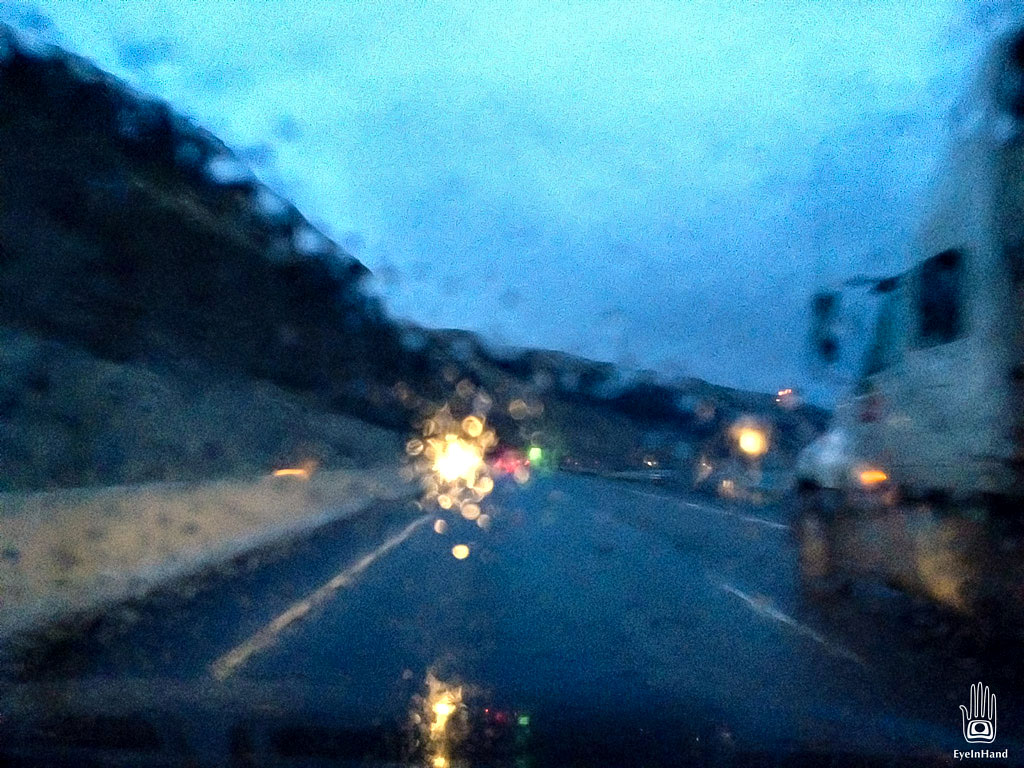
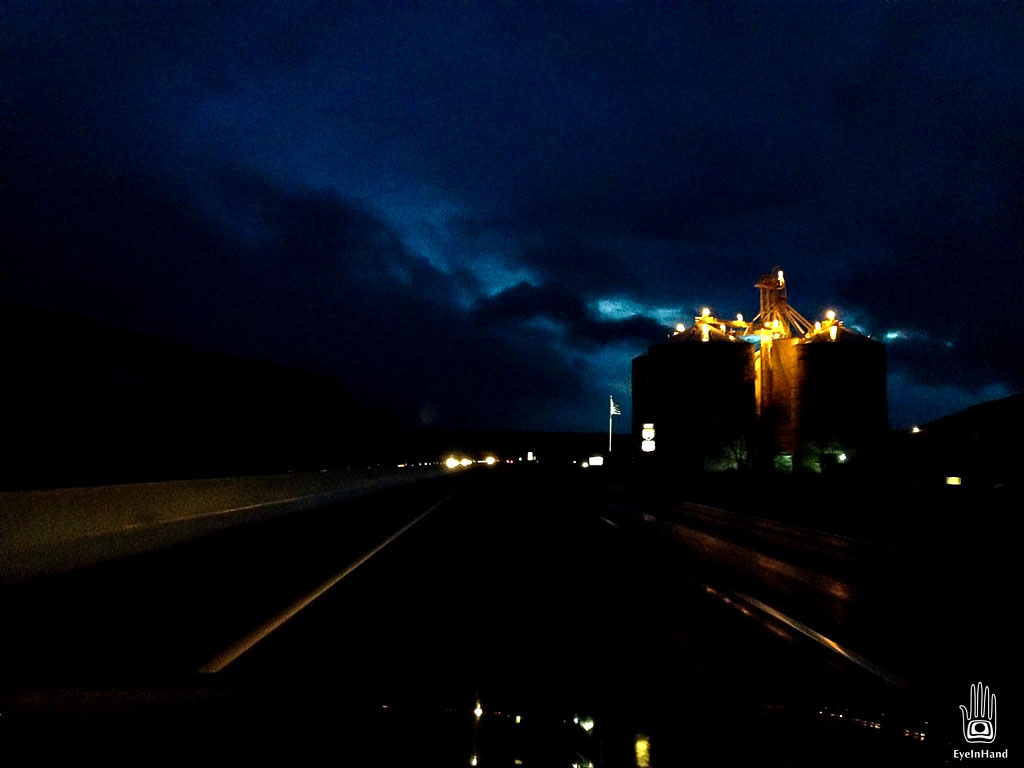




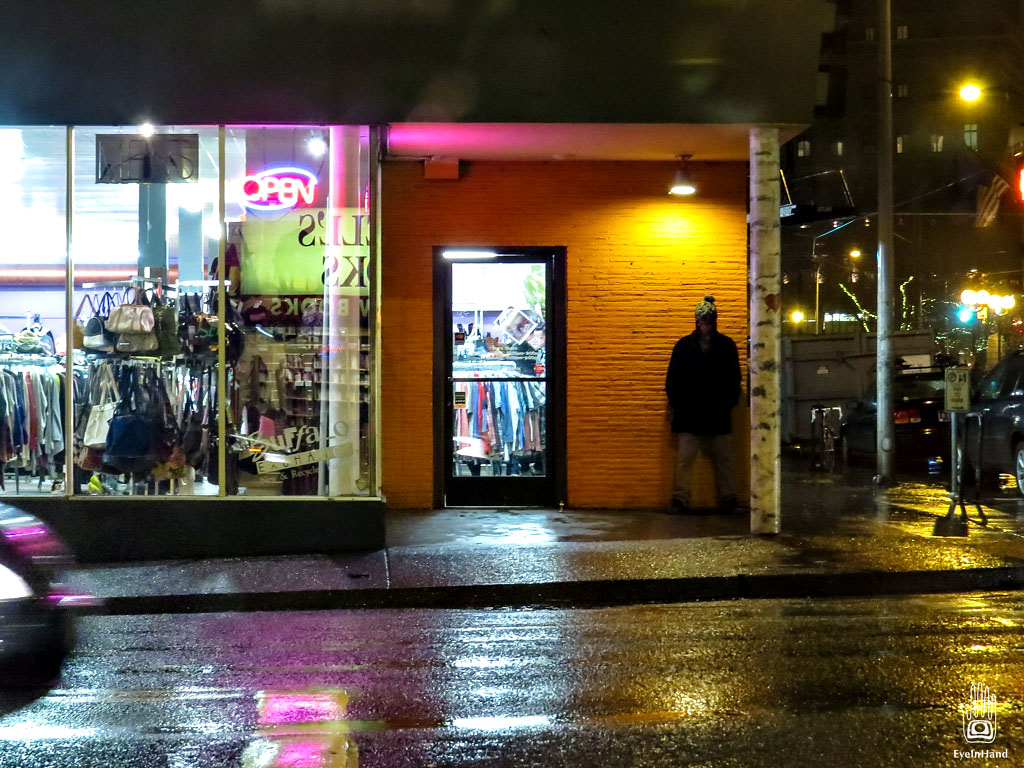






















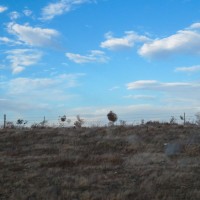



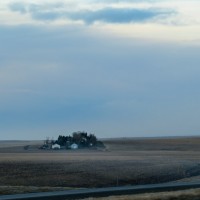





















Hi Barry,what a trip! I’d say the EPIC part is spending the days with your daughter before she heads off to start her own JOURNEYS ! Pretty special,we daddies know that! I’m waiting for plans In the mail to build Walter Baron’s Old Wharf Dory, check his site Old Wharf Dory.Will send some pics to you and D Man when I’m underway,she is a curvy beauty!! Jerry
Thanks Barry, so graphically described and photographed. The epic three day trip has been a wonderful read. A daughter carefully delivered, well done.
The hotel didn’t happen to be the Benson did it?
Whoa. Just one block away at the Vintage Plaza. We stood under the awning of the Benson.
Thanks guys. All three of you have daughters, I believe? A couple for sure. It was a great way to see her off, for sure. One more post to go, and she’s there.